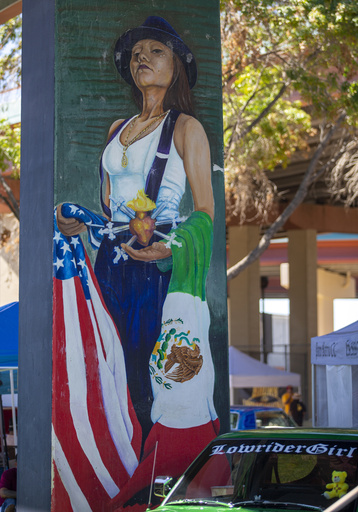
CHICAGO — For Luis Martinez, participating in lowriding bike and car competitions transcends mere competition; it’s a celebration of community and mutual support. The lowrider clubs in the Chicago region foster a familial bond among their members.
“It just starts with the metal,” Martinez reflected, recalling his introduction to lowrider culture when a trip to a flea market with his mother ignited his passion. He got his first bike at the young age of 12. “To me, it’s about expressing my art and what I can do with my own hands,” he shared while polishing a gleaming red bike in his Mishawaka, Indiana home.
Lowriding has roots in the Mexican American and Chicano communities, serving as a platform for expressing pride, honoring family, and uplifting culture. However, the portrayal of lowriding in media has often misrepresented it, wrongly linking its “low and slow” ethos to gang culture. Nowadays, this movement has seen a resurgence, with car shows and conventions becoming more prominent alongside the growth of the Hispanic population in the U.S.
The lowriding culture involves customizing vehicles, from various colors to sound systems, creating awe-inspiring designs. Rather than focusing on speed as seen with hot rods or muscle cars, lowriders emphasize style and art through their modifications, as explained by Alberto Pulido, chair of the Ethnic Studies department at the University of San Diego. “It was a way to speak to an identity, a presence, and it was done with few resources,” he noted in reference to the cultural significance of lowriding.
Tracing back to the post-World War II era, Pulido notes that lowriding began to flourish in the American Southwest when veterans returned home, eager to spend disposable income and customize their vehicles amid the infrastructural boom of highways in California. Today, lowrider conventions draw car enthusiasts from across the nation. Just last month, a formerly intimate gathering at Lincoln Park in El Paso, Texas, blossomed into a massive event, showcasing over 300 lowriders from various clubs.
Hector Gonzalez, from the Lincoln Park Conservation Committee, explained that car clubs play a pivotal role in providing connection and resources to their members, especially during times when local government support is lacking. “It is something that gets passed on from generation to generation,” Gonzalez noted, having been introduced to lowriding as a teenager. The tradition carries on as kids observe and embrace the community.
Lauren Pacheco, co-founder and co-curator of the Slow and Low Chicago Low Rider Festival, views lowriding as a global phenomenon marked by self-expression and creativity. “It’s a marvel of mechanical innovation,” she praised. The past decade has seen the practice expand as far as Japan, where local enthusiasts create unique modifications and attend events in the U.S.
Despite a growing appreciation for lowriding, it hasn’t all been positive. Pulido pointed out that stereotypes regarding Latino identity framed lowriding within a gang context instead of recognizing its artistic and community dimensions, particularly following portrayals in films like the 1979 drama “Boulevard Nights.” Although perceptions have improved, some lowriding events still draw unwarranted law enforcement attention.
Martinez, reflecting on misconceptions in Chicago, attributed these misunderstandings partially to visible tattoos that can evoke gang associations. To counteract these narratives, Pacheco stated that their festival works diligently to focus on creativity rather than gang culture. “It’s really a celebration of creativity and innovation and family,” she explained.
As the lowriding culture expands, it’s contributing to a growing industry surrounding cars and customization. Gonzalez mentioned that numerous small businesses catering to the lowrider community have emerged in areas like El Paso, including body shops and apparel stores. “It has become a mainstream business,” he stated, highlighting the shift from local efforts to widespread commercial opportunities.
Yet, for many, lowriding is more than financial transactions; it represents community building and legacy. Pulido emphasized that the cultural roots run deep, with entire families becoming involved over generations. Sonia Gomez embodies this legacy, sharing that her 8-year-old son, Daniel Marquez, honors his late father, Alberto Marquez, by engaging in lowriding culture. Daniel cherishes a lowriding bike as a tribute to his father’s legacy and participates in local celebrations that commemorate their heritage.
“Daniel takes an image he has with his father on a lowriding bike and places it next to his actual bike,” shared Gomez, illustrating how familial bonds manifest within the lowriding community. Daniel fondly recalls attending lowriding events alongside his family, emphasizing the joy these experiences bring.

